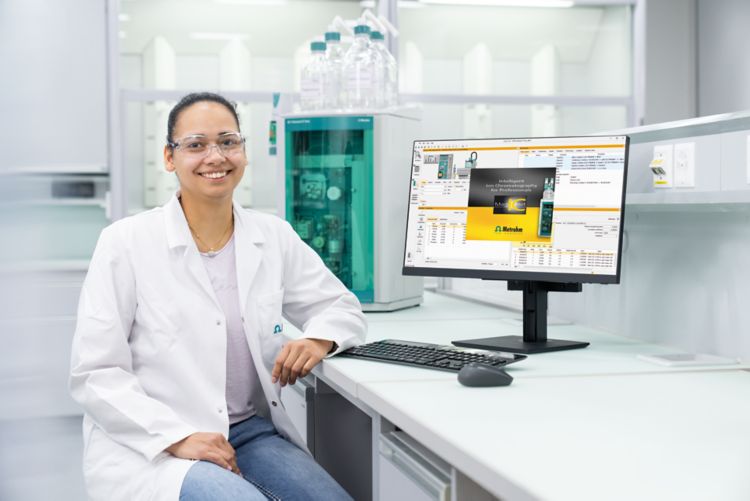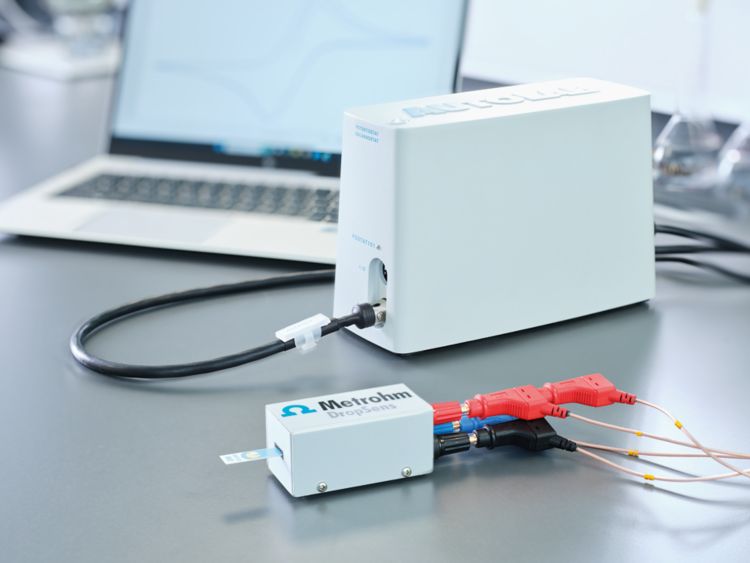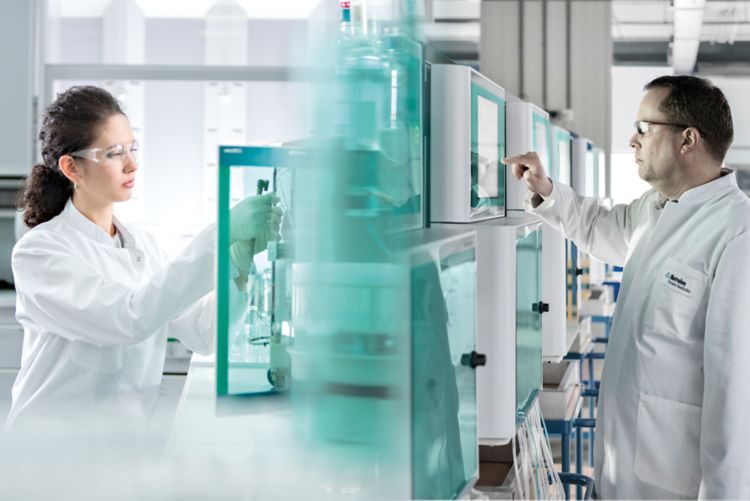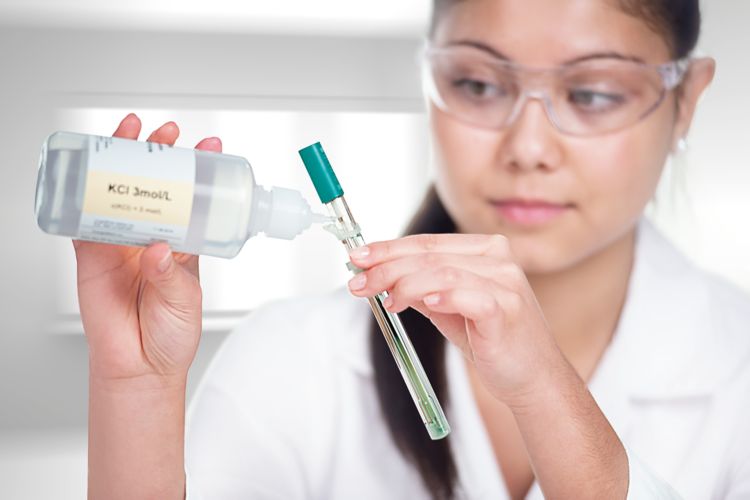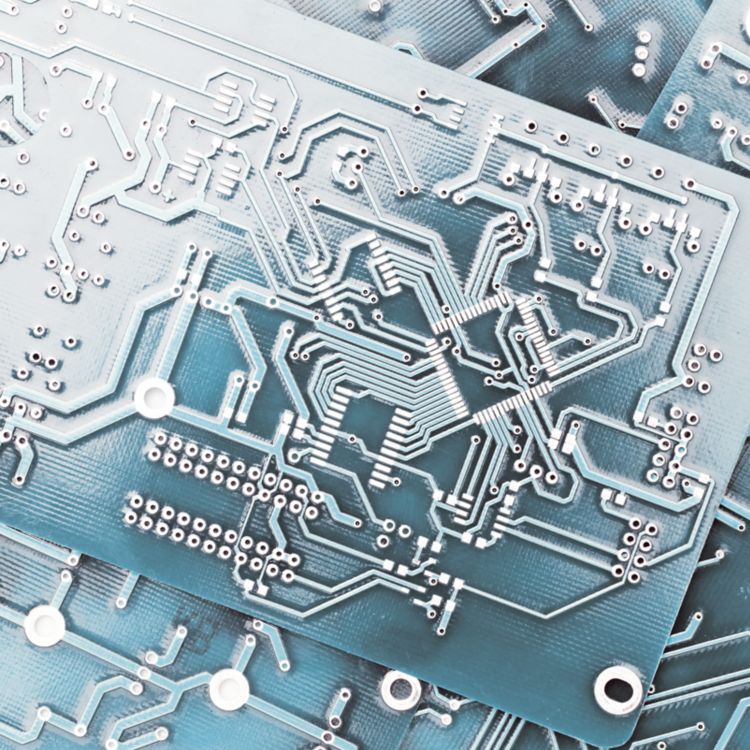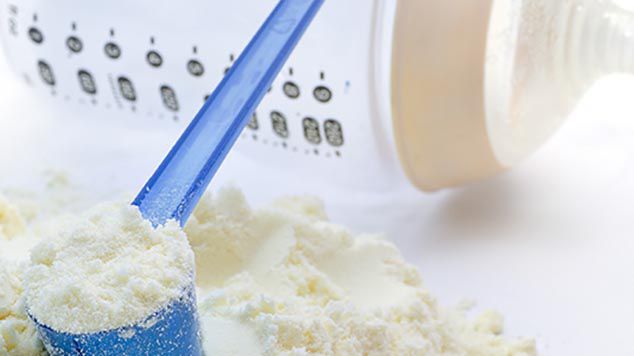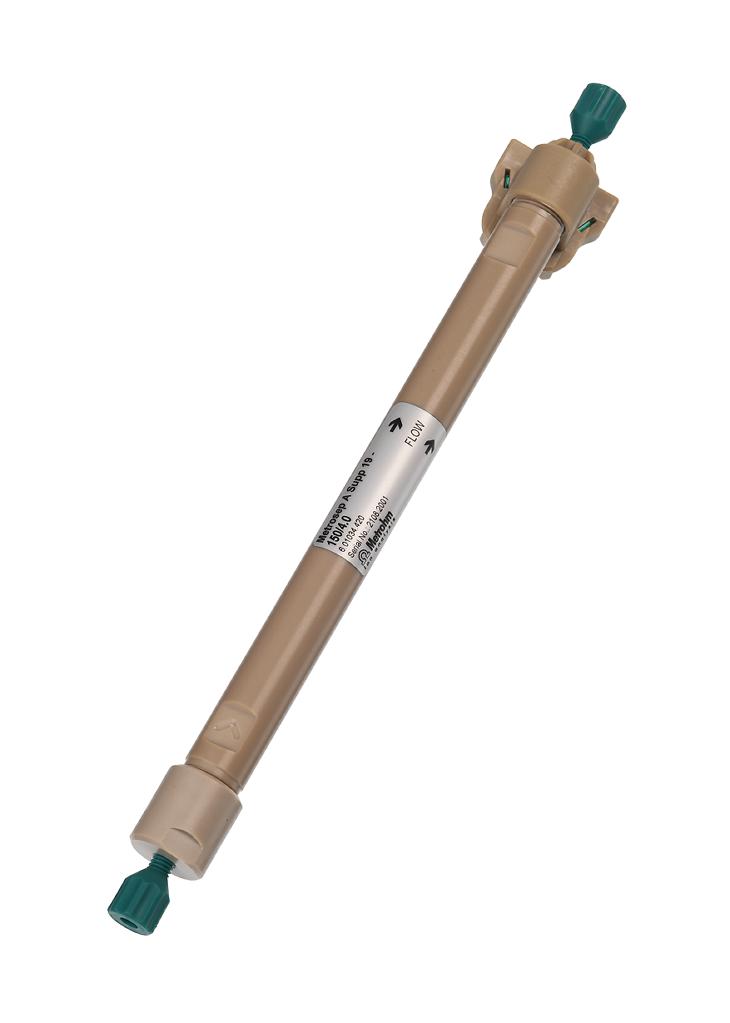Search
Market-leading solutions
Product families (70)Product configurations for any application
Product models (712)Tried-and-tested applications
Applications (2251)Trainings & webinars by experts
Events (7)Electrodes
Electrodes (508)Columns
Columns (155)Accessories
Accessories (2246)Software
Software (266)Manuals & brochures
Documents (2601)Other content
Items (110)On-demand webinars
Webinars (70)Unmatched support & service
Support & service (114)News
News (98)Inspiring industry insights
Insights (181)940 Professional IC Vario
One instrument – ultimate flexibility: Ion chromatograph with virtually no limitations to individual system configuration and customization.
OMNIS titrators
All-in-one potentiometric autotitrator platform: faster results, safer handling of chemicals, and maximum modularity for easier adaptability to your requirements.
OMNIS KF titrators
Fully integrated solution for water content determination with volumetric and coulometric Karl Fischer titration.
OMNIS NIR Analyzer
Good vibes in your lab: State-of-the-art near-infrared spectrometer for easier, faster, and more efficient quality control and routine screening.
2060 Platform
The robust and reliable modular analyzer platform for ultimate flexibility in customized process monitoring.
MIRA XTR
The premier handheld Raman system for safe in-field identification of unknown materials: compact, flexible, smart, and rugged.
VIONIC powered by INTELLO
The future of electrochemistry is pure. VIONIC: one instrument, pure discovery.
Professional CVS
Flexible benchtop analyzers for Cyclic Voltammetric Stripping.
949 pH Meter
Compact, entry-level benchtop pH meter for simple and reliable pH, mV, and ORP measurements.
Titrando
From stand-alone titrator to a fully automated solution in an overarching network: a potentiometric titrator that can be tailored to your specific requirements.
2.1001.0010
OMNIS Titrator without stirrer, without function licenseInnovative, modular potentiometric OMNIS Titrator. Thanks to 3S Liquid Adapter technology, handling chemicals is safer than ever before. The titrator can be freely configured with measuring modules and cylinder units and can have a stirrer added as needed. Thanks to various software function licenses, various measuring modes and functionalities are possible. Actuation via PC or local network; Connection option for up to four additional titration or dosing modules for additional applications or auxiliary solutions; Can be supplemented with magnetic stirrer and/or rod stirrer; Various cylinder sizes available: 5, 10, 20 or 50 mL; Liquid Adapter with 3S technology: Safe handling of chemicals and automatic transfer of the reagent dataMeasuring modes and software options:; Endpoint titration: "Basic" function license; Endpoint and equivalence point titration (monotonic/dynamic): "Advanced" function license; Endpoint and equivalence point titration (monotonic/dynamic) with parallel titration: "Professional" function license; Optional licenses for additional measuring, titration, and operating modes (e.g. volumetric Karl Fischer titration, conductometric or thermometric titration, coulometry, determination of the bromine index) ;
2.1008.0010
Eco TitratorThe compact Eco Titrator with integrated magnetic stirrer and touch-sensitive User Interface is ideal for routine analysis. It provides GLP-compliant results with minimum space requirements at all times (approx. DIN A4).Universally compatible with almost all potentiometric titrations, such as, for example, forFood products: Acid content, chloride, Vitamin C, iodine and peroxide number in fats; Water analysis: Carbonate and Ca/Mg hardness, chloride, sulfate, permanganate index; Petrochemistry: Acid/base number, sulfide & mercaptans, chloride, bromine number; Electroplating: Total acid, metal content, chloride; Surfactant analysis: Anionic, cationic and non-ionic surfactants; Photometry with the Optrode: p and m value, metals, water hardness;
2.1012.1010
OMNIS Sample Robot L Pick&PlaceOMNIS Sample Robot L with a "Peristaltic" (4-channel) pump module and a Pick&Place module in addition to extensive accessories for the direct transition to fully automatic titration. The system provides space in seven sample racks for 112 sample beakers of 120 mL each.The system can be extended upon request to include up to four peristaltic pumps and three additional Pick&Place modules, thus quadrupling the throughput while at the same time also guaranteeing long and interruption-free operation.
2.143.0200
TX-900MH impact printerCompact impact printer with USB and RS232 interface for 900 Touch Control (+); 915 KF Ti-Touch (+); 916 Ti-Touch (+); 917 Coulometer (+); 91X Meter (+)Eco Dosimat/Titrator (+); 877/848 Titrino plus (additional 6.2151.100 required); 865/876 Dosimat plus (additional 6.2151.100 required); 862 Compact Titrosampler (additional 6.2151.100 required); 870 KF Titrino plus (additional 6.2151.100 required); 899 Coulometer (additional 6.2151.100 required); (+) Cable included in scope of delivery
2.780.0010
780 pH MeterIn addition to pH, voltage and temperature measurement, the 780 pH Meter also offers an automatic stirrer control, a multi-point calibration with up to nine buffers, a method memory and various monitoring functions. The automatic pH electrode test in conformance with GLP permits objective assessment of the electrode. The large backlit multi-line display provides an overview and makes the individual settings easy. The bi-directional RS-232 interface enables data transfer to a printer or PC.
2.781.0010
781 pH/Ion MeterIn addition to pH, ion, voltage and temperature measurement, the combined 781 pH/Ion Meter also offers an automatic stirrer control, a multi-point calibration with up to nine buffers (pH mode), a method memory and various monitoring functions. The automatic pH electrode test in conformance with GLP permits objective assessment of the electrode. The large backlit multi-line display provides an overview and makes the individual settings easy. The bi-directional RS-232 interface enables data transfer to a printer or PC.Three different modes are available for ion measurement: direct measurement, standard or sample addition. In the case of fully automated standard addition with an optional Dosimat, only the concentration of the standard and the desired quantity of addition steps need to be entered, the pH/ion meter takes care of the rest. Up to 19 standards can be used for the calibration for direct measurement.
2.856.0010
856 Conductivity ModuleConductivity measuring module as supplement to an existing Titrando system or "stand-alone" in combination with a 900 Touch Control. With the 856 Conductivity Module, not only conductivity and temperature can be determined, but also TDS and salinity. It supports state-of-the-art conductivity measuring cells, i.e. 5-ring measuring cells. The Conductivity Module is equipped with two USB interfaces for connecting printers, barcode readers, or sample changers and four MSB interfaces for stirrers or Dosinos.For use with OMNIS Software, tiamo software, or Touch Control unit. Compliance with GMP/GLP and FDA regulations such as 21 CFR Part 11, if required.
2.856.0110
856 Conductivity Module with Touch Control, including 5-ring conductivity measuring cellHigh-end conductometer, based on the 856 Conductivity Module, including 900 Touch Control, 5-ring conductivity measuring cell and calibration standards. With the 856 Conductivity Module, not only conductivity and temperature can be determined, but also TDS and salinity. It supports state-of-the-art conductivity measuring cells, i.e. 5-ring measuring cells.The Conductivity Module has two USB interfaces for connecting printers, barcode readers or sample changers and four MSB interfaces for stirrers or Dosinos. In combination with the 900 Touch Control, the 856 Conductivity Module is in compliance with GLP and FDA 21 CFR part 11 requirements.
2.867.0010
867 pH ModuleModule for pH/ion measurement as supplement to a Titrando or "stand-alone" in combination with a 900 Touch Control.In addition to measurements of pH, temperature, mV, Ipol, Upol and concentration, the pH Module can perform standard additions (manual, dos, autodos) and Liquid Handling (add, prep, empty). It enables the use of both conventional and intelligent sensors for measuring. Also integrated in the software is an automatic GLP-compliant pH electrode test.The pH Module has two USB interfaces for connecting printers, barcode readers or sample changers and four MSB interfaces for stirrers or Dosinos (for the addition of auxiliary solutions or for standard addition).For use with OMNIS Software, tiamo software, or Touch Control unit. Compliance with GMP/GLP and FDA regulations such as 21 CFR Part 11, if required.
2.867.0110
867 pH Module with Touch ControlHigh-end pH/ion meter based on the 867 pH Module, including 900 Touch Control, 854 iConnect and intelligent "iUnitrode" pH glass electrode.In addition to measurements of pH, temperature, mV, Ipol, Upol and concentration, the pH Module can perform standard additions (manual, dos, autodos) and Liquid Handling (add, prep, empty). It enables the use of both conventional and intelligent sensors for measuring. Also integrated in the software is an automatic GLP-compliant pH electrode test.The pH Module has two USB interfaces for connecting printers, barcode readers or sample changers and four MSB interfaces for stirrers or Dosinos (for the addition of auxiliary solutions or for standard addition).In combination with the Touch Control, it is in compliance with GLP and FDA 21 CFR part 11 requirements.
- 8.000.60358.000.6035New column generation with built-in intelligence
Metrohm's iColumns are the first IC columns that are equipped with a data chip that stores freely definable data, fixed column data as well as data entered by the MagIC NetTM software. Any relevant information such as column type, standard parameters, maximum pressure, etc. can be called up at any time. Analysis data continuously entered by the MagIC NetTM software guarantees a complete column and GLP-compliant surveillance irrespective of the IC system in which the column is operated. The MagIC NetTM software surveys the critical column data and indicates any infringement of limits.
- 8.000.60378.000.6037Fully automated inline eluent preparation on demand
By using the 800 Dosino and the 849 Level Control as the only additional devices, Metrohm`s intelligent ion chromatography (IC) systems - the 850 Professional IC and the Compact IC family - can be easily extended to perform any unattended inline eluent preparation. Fully controlled by MagIC NetTM, the 849 Level Control monitors the eluent level while the Dosino performs all dosing and liquid handling tasks. Consecutive injections of a 250-µg/L standard over approximately 20 days revealed an excellent retention-time stability. After more than 800 consecutive injections, relative standard deviations for anions (F-, Cl-, NO2-, Br-, NO3-, PO43-, SO42-) and cations (Li+ , Na+, NH4+, K+, Ca2+, Mg2+) were smaller than 0.55 and 0.41%, respectively. In the case of a 24-hour sequence, retention-time precision for anions and cations was better than 0.09 and 0.08%, respectively. The presented inline eluent preparation system increases the retention-time reproducibility and allows the determination of anions and cations over a one-month period without manual eluent preparation.
- 8.000.60398.000.6039Mercury and arsenic speciation analysis by IC-ICP/MS
By means of IC-ICP/MS, different valence states of arsenic and mercury in the form of inorganic and organic species can be sensitively and unambiguously identified in one single run. Determination of common arsenic species in biological matrices is straightforward and can be performed down to the sub-ppb level.Species transformations of mercury that occur during several sample preparation techniques, however, require the use of specific isotope dilution mass spectrometry (SIDMS). This work illustrates the decisive advantage that Environmental Protection Agency (EPA) Method 6800 (SIDMS) offers for studying the transformations of mercury species during sample preparation of fish tissue samples. Because of the unique features and benefits of EPA Method 6800, it is expected that utilization of SIDMS will increase and that this valuable tool for optimizing and validating trace-metals-speciated sample preparation will gain much wider acceptance by analytical chemists.
- 8.000.60408.000.6040Improved cation separation thanks to a new column material
Comparative measurements show that the new Metrosep C 4 cation column has even better separation characteristics than the previous Metrosep C 2 and Metrosep Cation 1-2 column types. The Metrosep C 4 column has a clearly improved peak shape which leads to a better separation of the individual peaks. Using Metrosep C 4 the number of theoretical plates per meter was noticeably higher than that obtained on the Metrosep C 2 or C 1-2 column. Additionally for standard cations transition metals and amines, the Metrosep C 4 column shows better results with respect to peak shape, peak height, resolution and asymmetry factor. The clearly improved resolution of the C 4 column with its narrow and high peaks achieves baseline separation for six standard and six transition metal cations. Analysis times and peak areas obtained with the C 4 column are in the same range as those obtained with its predecessors.As a result of the latest production methods and materials, the promising Metrosep C 4 column excels by an outstanding separation performance for complex mixtures comprising standard cations, transition metal cations and amines.
- 8.000.60418.000.6041Simultaneous determination of fluoride species plus acid anions in etching baths by ion chromatography with dual detection
This poster presents a straightforward ion chromatographic determination of HF, HNO3, short-chain organic acids and H2SiF6 in etching bath samples. Standard ions such as fluoride, nitrate, acetate and sulfate are determined via suppressed conductivity detection while dissolved silicate is spectrophotometrically detected in the same run after downstream post-column reaction (PCR) as molybdosilicic acid. Analytical results of several commercial HF-HNO3-H2SiF6 mixtures obtained by ion chromatography (IC) and titration showed good agreement, which confirms the applicability of the presented «dual» detection IC method for controlling the composition of acidic texturing baths.
- 8.000.60428.000.6042Straightforward multipoint calibration using a single standard
The combination of 850 Professional IC, 858 Professional Sample Processor, Dosino and MagIC NetTM software offers a variety of automated ion chromatographic sample preparation and calibration techniques available as an anion, cation or dual channel system. Calibration is straightforward and requires only one multi-ion standard.Inline calibration allows the calibration of any standard concentration in the ppt range by using one single stable standard solution at the ppb level. By using a preconcentration column and switching the valves one, two or more times different calibration concentrations at the ultra-trace level can be created with unprecedented reproducibility. The inline preconcentration technique uses a pre-concentration column and is ideally suited for trace analysis in complex matrices, especially when combined with matrix elimination. Besides facilitating the preparation of g/L to ng/L calibration graphs Metrohm`s intelligent techniques are capable of logical decision making. While Metrohm`s intelligent Partial Loop technique (MiPT) allows samples with a wide concentration range to be injected without previous manual dilution, the intelligent inline dilution technique, after the first sample injection, compares peak areas, calculates, if necessary, the dilution factor, dilutes and automatically re-injects the sample. The presented inline techniques allow the rationalization of the time-consuming, error-prone and cost-intensive manual preparation of standard solutions. They guarantee that the determined sample concentrations always lie within the calibration range. Higher sample throughputs as well as lower analysis costs and improved data reliability are achieved.
- 8.000.60438.000.6043Automated dialysis as a sample preparation tool in ion chromatography
The analytical challenge treated in the present work consists in the determination of chloride, phosphate and sulfate in the presence of difficult sample matrices that interact with the stationary column phase or even render it unusable. Metrohm`s patented stopped-flow dialysis coupled to the new 881 Compact IC pro ion chromatograph overcomes these drawbacks. Two standard solutions covering the concentration ranges 1.0…3.6 mg/L and 10…36 mg/L as well as two samples, an ultra-high temperature (UHT) processed milk and a baby milk powder, were characterized in terms of analyte concentration, relative standard deviation, calibration quality, carryover and recovery rates. While the five-point calibration curves yielded correlation coefficients (R) better than 0.9999, carryover (between two subsequent injections of a concentrated sample and a blank) was less than 0.49%. Recoveries for the low (10…36 mg/L) and high standard concentrations (1.0…3.6 mg/L) were within 91…99% and 94…100%, respectively. Automated compact stopped-flow dialysis is a leading-edge sample preparation technique that ensures optimum separation performance by effectively protecting the column from detrimental matrix compounds.
- 8.000.60448.000.6044Fully automated sample preparation for liquid chromatographic content determinations
Inline coupling of the 815 Robotic Soliprep with an ion chromatograph (IC) allows the straightforward determination of anions and cations in tablets. After automatic solvent addition and subsequent comminution, the homogenized tablet samples (Singulair and Bezafibrat) are filtered and subsequently transferred to the injector. The completely automated sample preparation saves both time and money, guarantees traceability of each sample preparation step and yields correct and precise results. In the range of 0.2…50 mg/L, six-point calibration curves for anions and cations yield correlation coefficients better than 0.99990 and 0.99991, respectively. While relative standard deviations (RSDs) for sub-ppm levels of nitrate, sulfate, calcium and magnesium in Singulair and Bezafibrat are smaller than 3.64%, RSD of ppm levels of chloride is better than 0.83%. The application of further inline sample preparation steps such as pulverizing, extracting, filtering or diluting facilitates numerous custom-tailored setups for ion determinations in exacting matrices such as animal feed, sediments or food.
- 8.000.60458.000.6045Trace-level aliphatic amines in cationic pharmaceutical ingredients
The analytical challenge treated by the present work consists in detecting sub-ppb concentrations of low-molecular-weight amines in the presence of strongly retained cationic drugs by using ion chromatography (IC) with upstream inline coupled-column matrix elimination (CCME). In contrast to direct-injection IC, where the late elution of strongly retained drugs requires eluents with added acetonitrile, the CCME technique uses two preconcentration columns in series. In an «inverse matrix elimination step, cationic drug and target amines are trapped on a high-capacity and a very-high-capacity preconcentration column, respectively. During amine determination, a rinsing solution flushes the drug to waste. This significantly shortens the analysis time and improves sensitivity as well as selectivity. Besides the determination of monomethylamine in Nebivolol hydrochloride discussed here, the CCME technique is a promising tool for detecting further low-molecular-weight amines in a wide range of drugs.
- 8.000.60478.000.6047Fully automated potentiometric determination of the hydroxyl number (HN) according to ASTM E1899-08 and DIN 53240-2
Hydroxyl is an important functional group and knowledge of its content is required in many intermediate and end-use products such as polyols, resins, lacquer raw materials and fats (petroleum industry). The test method to be described determines primary and secondary hydroxyl groups. The hydroxyl number is defined as the mg of KOH equivalent to the hydroxyl content of 1 g of sample.The most frequently described method for determining the hydroxyl number is the conversion with acetic anhydride in pyridine with subsequent titration of the acetic acid released: H3C-CO-O-CO-CH3 + R-OH -> R-O-CO-CH3 + CH3COOH. However, this method suffers from the following drawbacks: - The sample must be boiled under reflux for 1 h (long reaction time and laborious, expensive sample handling) - The method cannot be automated - Small hydroxyl numbers cannot be determined exactly - Pyridine has to be used, which is both toxic and foul-smellingBoth standards, ASTM E1899-08 and DIN 53240-2, offer alternative methods that do not require manual sample preparation and therefore can be fully automated: The method suggested in ASTM E1899-08 is based on the reaction of the hydroxyl groups attached to primary and secondary carbon atoms with excess toluene-4-sulfonyl-isocyanate (TSI) to form an acidic carbamate. The latter can then be titrated in a non-aqueous medium with the strong base tetrabutyl- ammonium hydroxide (TBAOH). The method suggested in DIN 53240-2 is based on the catalyzed acetylation of the hydroxyl group. After hydrolysis of the intermediate, the remaining acetic acid is titrated in a non-aqueous medium with alcoholic KOH solution. The present work demonstrates and discusses an easy way to determine the hydroxyl number according to ASTM E1899-08 or DIN 53240-2 with a fully automated titrimetric system for a great variety of industrial oil samples.
United States
Local Applications
Eco Coulometer_Landing page
Economical coulometric Karl Fischer titrator for low moisture content analysis.
Ion chromatographs
Ion chromatographs for routine use and research applications: flexible, reliable, and easy to use.
Titration
Manual and fully automated titrators, titration accessories, and titration software for potentiometric and thermometric titrations.
Products
Metrohm offers a wide range of analytical instrumentation, laboratory equipment, and accessories.
White paper: FOS/TAC Quotient for the optimization of methane production from biomass
Learn how to monintor the biogas fermenter in methane production using biomass as a renewable source of energy.
White paper: Manual vs. automated titration: benefits and advantages to switching
Download our White Paper to learn more about the benefits of automatic titrators compared with manual titration setups.
ASTM D8192: Automated water hardness determination
The norm ASTM D8192 presents automated photometric titration for water hardness determination. A free white paper describes the determination of total, calcium, and magnesium hardness using the optical sensor Optrode from Metrohm for more reliable, accurate, and precise measurements compared to manual titrations.
New ASTM D8045: Thermometric acid number determination in crude oil
Determine the acid number in crude oil and petroleum products by thermometric titration as per ASTM D8045.
6.6068.202
StabNet 2.x fullPC program for data handling and instrument control of stability measuring instruments. The software permits checks, data acquisition, evaluation and monitoring, as well as generating reports on stability measurements.Graphical user interface for routine operations, extensive database programs, method development, system configuration, very flexible user administration, extensive data export functions, individually configurable report generator.StabNet Full complies with the directives according to FDA 21 CFR Part 11.Dialog languages: German, EnglishThe following instruments are supported:892 Professional Rancimat; 893 Professional Biodiesel Rancimat; 895 Professional PVC Thermomat; 1 license for max. 4 stability measuring instruments on one PC.
6.6069.412
Vision 4.1Vision is the Metrohm software solution for method development and for controlling Metrohm XDS process instruments and B&W Tek instruments The user-friendly graphics analysis interface makes it easy to apply chemometric algorithms for creating identification, qualification, and quantification methods.
6.6072.208
Vision Air 2.0 CompleteVision Air - Universal spectroscopy software. Vision Air Complete is a modern and simple-to-operate software solution for use in a regulated environment.Overview of the advantages of Vision Air: Individual software applications with adapted user interfaces ensure intuitive and simple operation; Simple creation and maintenance of operating procedures; SQL database for secure and simple data management; The Vision Air Complete version (66072208) includes all applications for quality assurance using Vis-NIR spectroscopy: Application for instrument and data management; Application for method development; Application for routine analysis; Additional Vision Air Complete solutions: 66072207 (Vision Air Network Complete); 66072209 (Vision Air Pharma Complete); 66072210 (Vision Air Pharma Network Complete);
DropView 8400
DropView 8400 SoftwareDropView 8400 Software is advanced but highly user-friendly software running µStat 300, µStat 400, μStat-i 400s, μStat-i 400, µStat 4000P, µStat 4000, µStat 8000P, µStat 8000 and µStat ECL equipments, controlling all their different functionalities
6.6068.114
StabNet 1.x Update 2.x fullUpgrade of StabNet 1.0 or 1.1 (Full) to Stabnet 2.X Full.
6.6069.414
Vision Multi 4.1Vision is the Metrohm software solution for method development and for controlling Metrohm XDS process instruments and B&W Tek instruments.The user-friendly graphics analysis interface makes it easy to apply chemometric algorithms for creating identification, qualification, and quantification methods.Vision Multi contains 5 multi-user licenses and is the ideal solution for setting up a server-client network.
6.6072.207
Vision Air 2.0 Network CompleteVision Air - Universal spectroscopy software. Vision Air Network is a modern and simple-to-operate software solution. The network version enables the structuring of a global server-client network with a central database.Overview of the advantages of Vision Air: Individual software applications with adapted user interfaces ensure intuitive and simple operation; Centralized data and instrument management; Simple configuration and updating of several devices in just a few steps ; The Vision Air Network Complete version (66072207) contains all applications for quality assurance using Vis-NIR spectroscopy: Application for a global instrument and data management; Application for method development; Application for routine analysis;
DropView SPELEC
DropView SPELEC SoftwareDropView SPELEC is a Spectroelectrochemical software that controls SPELEC instrument, offering a perfect synchronization of the optical and electrochemical measurements, as well as advanced tools for data treatment.
6.6068.921
StabNet 2.x full DemoDemo version for StabNet. Test version for 30 days.
6.6069.413
Vision Pharma 4.1Vision is the Metrohm software solution for method development and for controlling Metrohm XDS process instruments and B&W Tek instruments in a regulated environment. The user-friendly graphics analysis interface makes it easy to apply chemometric algorithms for creating identification, qualification, and quantification methods.
110
Screen-Printed Carbon ElectrodeScreen-Printed Carbon Electrode (Aux.:C; Ref.:Ag). Suitable for working with microvolumes, for decentralized assays or to develop specific sensors.
6.00350.100
Separate Ag ring electrodeThis silver electrode must be used in combination with a reference electrode (c(KNO3) = 1 mol/L as reference electrolyte) and is suitable for precipitation titrations (titrant silver nitrate), e.g. of: chloride, bromide, iodide; sulfides; hydrogen sulfide; mercaptans; cyanides; The permanently fused-in silver ring is resistant to highly concentrated acids and saline solutions.
6.00430.100
Ag TitrodeCombined silver ring electrode with a pH glass membrane as reference electrode.This maintenance-free electrode is suitable for precipitation titrations when the pH value remains constant (titrant silver nitrate), for example of: chloride, bromide, iodide; sulfides; hydrogen sulfide; mercaptans; cyanides ; This electrode is stored in distilled water.Depending on the application, we recommend using an Ag Titrode with a coating (AgBr, AgCl or Ag2S coating), which can be ordered accordingly.
6.00450.100
Combined Ag ring electrodeCombined silver ring electrode with fixed ground-joint diaphragm.This electrode is suitable for precipitation titrations when the pH value varies (titrant silver nitrate) of, e.g.: Chloride, bromide, iodide; Sulfides; Hydrogen sulfide; Mercaptans; Cyanides; The fixed ground-joint diaphragm is insensitive to contamination and the permanently fused-in silver ring is resistant to more highly concentrated acids and saline solutions.c(KNO3) = 1 mol/L is used as reference electrolyte and storage solution. Depending on the application, we recommend using an Ag ring electrode with a coating (AgBr, AgCl or Ag2S coating), which can be ordered accordingly.
6.00450.300
Combined iAg-ring electrodeIntelligent, combined silver ring electrode with integrated memory chip for storing sensor data.This electrode is suitable for precipitation titrations when the pH value varies (titrant silver nitrate) of, e.g.: chloride, bromide, iodide; sulfides; hydrogen sulfide; mercaptans; cyanides; The fixed ground-joint diaphragm is insensitive to contamination and the permanently fused-in silver ring is resistant to more highly concentrated acids and saline solutions.c(KNO3) = 1 mol/L is used as reference electrolyte and storage solution.
C110
Screen-Printed Carbon Electrode / Work in SolutionScreen-Printed Carbon Electrode (Aux.:C; Ref.:Ag) / Work in Solution. Recommended for working in batch analysis.
150
Screen-Printed Carbon Electrode (Aux.:Pt; Ref.:Ag)Screen-Printed Carbon Electrode (Aux.:Pt; Ref.:Ag). Suitable for working with microvolumes, for decentralized assays or to develop specific sensors.
220AT
Screen-Printed Gold Electrode (Aux.:Au; Ref.:Ag) / Ink ATScreen-Printed Gold Electrode (Aux.:Au; Ref.:Ag) / Ink AT. Suitable for working with microvolumes, for decentralized assays or to develop specific sensors.
220BT
Screen-Printed Gold Electrode (Aux.:Au; Ref.:Ag) / Ink BTScreen-Printed Gold Electrode (Aux.:Au; Ref.:Ag) / Ink BT. Suitable for working with microvolumes, for decentralized assays or to develop specific sensors.
C220AT
Screen-Printed Gold Electrode (Aux.:Au; Ref.:Ag) / Ink AT / Work in SolutionScreen-Printed Gold Electrode (Aux.:Au; Ref.:Ag) / Ink AT / Work in Solution. Recommended for working in batch analysis.
- Mar 15, 2021Multiparameter analysis in fertilizers by thermometric titration
Why analyze fertilizer composition and determine potassium, phosphorus, sulfur, ammoniacal nitrogen, and urea on our blog.
- Dec 11, 2023Karl Fischer titration: When to use volumetry or coulometry
This blog article explains the most important factors to consider in order to choose the optimal Karl Fischer titration technique: coulometry or volumetry. Coulometric Karl Fischer titration (KFC) is generally used for samples with a low moisture content between 0.001% to 1%. Volumetric Karl Fischer titration (KFT) is used for samples with higher levels of moisture between 0.1% to 100%.
- Feb 8, 2021ASTM D6304: Easier determination of moisture in petroleum products
- Feb 13, 2021Chemistry of Chocolate
Components of a chocolate bar and applications for chocolate quality analysis.
- Feb 22, 2021Recipes with Raman
Analysis of phenolic compounds, fungicides, the fruit ripening process, synthetic dyes, the freshness of meat, the purity of edible oils, and the heat stability of oils with Raman spectroscopy.
- Aug 16, 2021Does counter electrode (CE) size matter?
- Aug 9, 2021From corn to ethanol: improving the fermentation process with NIRS
Improved fermentation in bioethanol production with near-infrared spectroscopy analysis.
- Aug 30, 2021NIR spectroscopy in the petrochemical and refinery industry: The ASTM compliant tool for QC and product screening – Part 1
Nea-infrared spectroscopy NIRS applications and parameters for the petrochemical, oil, and refinery industry.
- Jun 7, 2021Supercharge your battery research – Part 2
Battery research with electrochemistry. Learn more about electrochemical characterization techniques for lithium ion batteries.
- May 31, 2021Validation of titration methods
6.01034.410
Metrosep A Supp 19 - 100/4.0Outstanding separation properties and high-capacity – these are the things which clearly distinguish the Metrosep A Supp 19 product family from the rest of the column portfolio. It features best peak symmetries and selectivities as well as high thermal, mechanical and chemical stability, which makes it extremely robust and stable in the presence of higher flow rates and pressures.The shortest anion separation column of the Metrosep A Supp 19 product family is the 100 mm version – outstandingly suitable for simple applications that require rapid and robust analytics. With elevated flow, reliable determination of the standard anions is possible in less than 7 minutes. Even at these higher flow rates, the separation between fluoride and the injection peak is guaranteed. Short elution times permit a high sample throughput, which is particularly important for contract laboratories and in routine analysis. A further application area of the Metrosep A Supp 19 - 100/4.0 is the determination of analytes which usually have very late elution, e.g. perchlorate or citrate. Due to high flow rates and strong eluents, even analytes such as these can be determined in a very short time, thus rendering the entire analysis time-saving and efficient.
6.01034.420
Metrosep A Supp 19 - 150/4.0Outstanding separation properties and high-capacity – these are the things which clearly distinguish the Metrosep A Supp 19 product family from the rest of the column portfolio. It features best peak symmetries and selectivities as well as high thermal, mechanical and chemical stability, which makes it extremely robust and stable in the presence of higher flow rates and pressures.The 150 mm version is considered the standard column for anion chromatography, as it reliably solves the lion's share of applications and is very versatile in its use. Thanks to its high capacity, the Metrosep A Supp 19 - 150/4.0 separation column is particularly well suited even for complex applications with sophisticated matrices. The range of applications of the Metrosep A Supp 19 - 150/4.0 is very versatile, thanks to its outstanding separation properties and comprises the following applications, for example:Determination of standard anions (fluoride, chloride, nitrite, bromide, nitrate, phosphate and sulfate) in a wide variety of water samples;; Determination of standard anions and organic acids in complex sample matrices, e.g. environmental or food samples;; Determination of standard anions and organic acids in boiler feed water to ensure the safe operation of power plants;; Determination of standard anions in pharmaceutical samples.;
6.01034.430
Metrosep A Supp 19 - 250/4.0Outstanding separation properties and high-capacity – these are the things which clearly distinguish the Metrosep A Supp 19 product family from the rest of the column portfolio. It features best peak symmetries and selectivities as well as high thermal, mechanical and chemical stability, which makes it extremely robust and stable in the presence of higher flow rates and pressures.With the longest of the columns, i.e. the 250 mm version, the portfolio of the Metrosep A Supp 19 product family is rounded out to include a high-performance separation column. The exceptionally stable packaging ensures that the separation column will enjoy a long service life. With its unsurpassed separating efficiency, it is suitable for even the most complex application challenges. This means that the possible usages of this anion separation column greatly exceed the standard applications.Thanks to the extremely high capacity of this separation column, combined with its outstanding plate counts, even the most demanding sample matrices are easily mastered with the Metrosep A Supp 19 - 250/4.0.The separation column can also be readily used for gradient applications to further optimize the separation, as for example for the determination of organic acids of low molecular weight.
6.1006.520
Metrosep A Supp 5 - 150/4.0The 150 mm version of the Metrosep A Supp 5 is distinguished by its very good separation properties. High plate numbers and excellent peak symmetries facilitate working in the lower µg/L range. The particle size of 5 µm makes a decisive contribution to the separating efficiency of this column. The Metrosep A Supp 5 - 150/4.0 offers the optimum combination of selectivity and capacity, with which even complex separation tasks can be solved within a short time. This property makes the Metrosep A Supp 5 - 150/4.0 one of the best universally applicable standard IC columns.
6.01034.500
Metrosep A Supp 19 Guard/4.0The Metrosep A Supp 19 Guard/4.0 reliably protects the anion separation columns of the Metrosep A Supp 19 product family against contaminations from the sample or eluent and thus prolong their service life significantly. The guard columns and separation columns of the Metrosep A Supp 19 product family are made of PEEK and filled with the same material. This ensures that the chromatographic separating efficiency is not restricted in any way. The "On Column Guard System" makes it possible to screw the guard column onto the anion separation column directly and conveniently. The economical price and simple handling make the Metrosep A Supp 19 Guard/4.0 the ideal protection for the separation column.
6.1006.550
Metrosep A Supp 5 - 50/4.0The Metrosep A Supp 5 - 50/4.0 separates the seven standard anions in less than 6 minutes. Even fluoride is still separated from the injection peak and can be integrated perfectly. Like all columns in the A Supp 5 product range, the column based on a polyvinyl alcohol polymer is characterized by high plate numbers and therefore by outstanding separating efficiency. The Metrosep A Supp 5 - 50/4.0 is the column of choice when simple separation tasks need to be solved in a short time – and that without having to sacrifice very low limits of detection.
6.1006.510
Metrosep A Supp 5 - 100/4.0The Metrosep A Supp 5 - 100/4.0 allows highly efficient, rapid separations. This property makes the Metrosep A Supp 5 - 100/4.0 the standard column for short analysis times and the determination of anions which elute late (e.g., perchlorate).
6.1006.530
Metrosep A Supp 5 - 250/4.0The high-performance separation column from Metrohm with an extremely high number of plates for the most demanding separation tasks. Even complex separation problems can be solved easily and reproducibly with the Metrosep A Supp 5 - 250/4.0. The high capacity of the column allows, for example, the detection of 1 µg/L bromate along with 150 mg/L chloride without sample preparation. The range of applications possible with this column far exceeds the detection of standard anions. The Metrosep A Supp 5 - 250/4.0 is the column of choice when it comes to reliable monitoring of the high purity standards in the semiconductor industry or of the boiler feed water of power plants.
6.1006.220
Metrosep A Supp 5 - 150/2.0The Metrosep A Supp 5 - 150 in the Microbore version is distinguished for its excellent separation properties. The particle size of 5 µm makes a decisive contribution to the separating efficiency of this column. The Metrosep A Supp 5 - 150/2.0 offers the optimum combination of selectivity and capacity, with which even complex separation tasks can be solved within a short time. The 2 mm Metrosep A Supp 5 separation columns are packed with the same material as the corresponding 4 mm separation columns. The 150 mm version of this column type is used for universal applications at low eluent consumption.With its low eluent flow, this column is particularly suitable for IC-MS coupling.
6.1006.230
Metrosep A Supp 5 - 250/2.0The Metrosep A Supp 5 - 250/2.0 is the microbore high-performance separation column with which even complex separation problems can be solved easily and reproducibly. The range of applications possible with this column far exceeds the detection of standard anions. The Metrosep A Supp 5 - 250/2.0 is used wherever maximum separating efficiency must be combined with both the lowest of detection limits and low eluent consumption.With its low eluent flow, this column is particularly suitable for IC-MS coupling.
BWT-840000961
Raman Video Micro-Sampling System (785 nm)Video microscope sampling system for use with B&W Tek's lab and industrial Raman probes. Includes a 20x objective at a working distance of 16 mm. Offers manual rough and fine adjustment on the X, Y, and Z-axes, coaxial LED illuminator for target alignment, video camera for sample observation, and is compatible with standard microscope objectives. Probe not included, available separately. 785 nm configuration.BAC151C-785
CAST
μStat Cable connector for Screen-Printed ElectrodesConnects any DropSens equipment with DropSens Screen-Printed Electrodes
CNFSOL
Carbon Nanofibres SolutionCarbon Nanofibres Solution produced via the catalytic carbon vapour deposition process. The manufacturing processes provide a highly graphitized material without amorphous carbon – Available in 1.0 mL and 5.0 mL.
EC.Raman.Battery
Metrohm Hyphenated EC-Raman Battery SolutionAn Autolab modular PGSTAT302N with an Electrochemical Impedance Spectroscopy (EIS) module installed and a B&W Tek i-Raman Plus 532 H System are the foundation of this system. Depending on your cell size and design you can add either a B&W Tek Raman Video Micro-Sampling System (532 nm), or the B&W Tek Raman Probe Holder.Get ready to track age-induced structural changes, electrolyte decomposition, and solid electrolyte interphase (SEI) formation with your EC-Raman Battery Solution.It is easy to get started, see instant results, all with an instrument you can upgrade as your research progresses.• Two editable hyphenated EC-Raman procedures for the NOVA software as well as the BWSpec software for extended data analysis.• An electrochemical workstation with high accuracy EIS.• Future-proof your research with the ability to add up to 7 additional modules post-installation.Choose, depending on your cell size, either a B&W Tek Raman Video Microsampling System (532 nm), or the B&W Tek Raman Probe Holder. B&W Tek Raman Video Microsampling System (532 nm) can accommodate cells up 30 mm high.B&W Tek Raman Probe Holder can accommodate large battery-dedicated EC-Raman cells.
FLWCL
Flow Cell for Screen-Printed ElectrodesMethacrylate wall-jet Flow-Cell for FIA. Suitable to be used with standard format Screen-Printed Electrodes with the electrochemical cell in the middle of the strip. Closing system with powerful magnets Fittings included.
BICAST
μStat Cable connector for Dual Screen-Printed ElectrodesConnects any DropSens equipment with DropSens Dual Screen-Printed Electrodes
BWT-840000395
Raman Probe HolderProbe holder for use with B&W Tek's lab-grade Raman probes. Provides manual coarse and fine XYZ adjustments.
CNTSOL
-COOH funcionalized Multi-Walled Carbon Nanotubes SolutionCarbon nanotubes are produced via CVD and purified to remove free amorphous carbon deposits and catalyst metallic particles. They are functionalized with -COOH groups - Available in 1.0 mL and 5.0 mL.
EC.Raman.Corrosion.Explorer
Metrohm Hyphenated EC-Raman Explorer Corrosion SolutionIncludes an Autolab modular PGSTAT302N with an Electrochemical Impedance Spectroscopy (EIS) module installed, a B&W Tek i-Raman Plus 532 H System, a B&W Tek Raman Video Microsampling System (532 nm) and an Autolab Trigger cable.Ready when you are, the EC-Raman Explorer Corrosion Solution is easy to use. Get started quickly with a versatile potentiostat/galvanostat that can be expanded as your research develops.• Two editable hyphenated EC-Raman procedures for the NOVA software as well as the BWSpec software for extended data analysis.• An electrochemical workstation with high accuracy EIS.• Future-proof your research with the ability to add up to 7 additional modules post-installation.• 532 nm laser excitation for higher Raman signal• Visual surface inspection with the microsampling system
BWT-840000609
Enclosure for Raman sampling systemEnclosure for Raman sampling system (i.e. microscope, probe holder) used to eliminate direct ocular and/or skin exposure from the laser emission. The enclosure is ergonomically designed to facilitate sample loading and system operation. For use with 532, 785 and 1064 nm wavelengths.
- viva
Find information on compatibility and download the viva voltammetry/CVS software as well as language packs.
- Ion chromatography: Maintenance intervals
Maintenance intervals for Metrohm ion chromatography instruments based on time, sample used or topic.
- Ion chromatography: Maintenance intervals
Maintenance intervals for Metrohm ion chromatography instruments based on time, sample used or topic.
- Ion chromatography g...Ion chromatography guide
Videos on maintaining Metrohm Ion Chromatography systems.
- Ion chromatography g...Ion chromatography guide
Videos on maintaining Metrohm Ion Chromatography systems.
- Warranty
The uncompromising quality of our products allows us to offer warranty services that beat industry standards.
- Eco Titrator Guide: ...Eco Titrator Guide: Assembly, calibration, and titration
Video tutorials show hot to assemble and calibrate your Eco Titrator and how to perform titrations.
- KF Titration – Condi...KF Titration – Conditioning the coulometric KF cell
- KF Titration – Sampl...KF Titration – Sample processing
- FAQs – MagIC Net...FAQs – MagIC Net
- 3 - 5 JunRosemont, IL, United StatesSUR/FIN Expo
The SUR/FIN Expo 2025, organized by the National Association for Surface Finishing (NASF), is scheduled for June 3-5, 2025, at the Donald E. Stephens Convention Center in Rosemont, Illinois. This leading conference and trade show is dedicated to the surface technology industry, bringing together leading companies to showcase innovations in equipment, products, and services across the supply chain.
- 23 - 25 JunFort Lauderdale, FLNSA Annual Conference
The NSA Annual Conference, taking place from June 23-25, 2025, at the Broward County Convention Center, is a pivotal law enforcement event that will bring together sheriffs from across the nation.
- Apr 22What’s New in Titration: New Techniques, Applications and Integration
Titration is a classic yet evolving technique. Whether you're tackling weak acids, complex matrices or low concentrations, modern titration methods offer smarter, faster solutions. In this educational webinar, we’ll explore how new approaches to titration are used to open doors in sectors like batteries, semiconductors and specialty chemicals.
- 9 - 11 JunOmaha, NE, United StatesFuel Ethanol Workshop
The 2025 International Fuel Ethanol Workshop & Expo (FEW) will take place from June 9-11 at the CHI Health Center in Omaha, Nebraska. Celebrating its 41st year, FEW is the world's largest and longest-running ethanol conference, renowned for delivering cutting-edge content. Attendees can expect in-depth discussions on commercial-scale ethanol production, emerging technologies, and near-term research and development.
- May 7The basics of titration
This free webinar explains the basics of titration. It covers the theory and a demonstration performed on a modern, automatic titrator with a photometric or an electrochemical sensor.
- 28 Apr - 1 MayGalveston, TX United StatesAnalyzer Technology Conference
- 27 - 30 AprPortland, ORAOCS Annual Meeting & Expo
- Aug 3, 2020Launch of NIRS DS2500 Polyol Analyzer
Near-infrared spectrometer for fast, simple, and robust routine analysis of polyols.
- May 18, 2020NIR spectroscopy guide for QC laboratories
- Apr 15, 2020Free white paper compares the pros and cons of various standard methods
- Aug 21, 2021Real World Raman: Exposing fentanyl-laced, counterfeit, and illegal drugs
- Feb 10, 2020What's suppression in ion chromatography all about? Theoretical aspects and practical benefits explained.
- Feb 20, 2020Mercaptans and hydrogen sulfide in crude oil as per ASTM D3227 and UOP163
- Jun 7, 2021Modernizing pharmaceutical assay testing
- Mar 5, 2020QC in soap manufacturing – total fatty matter, iodine value, and more by Vis-NIR Spectroscopy
- Apr 21, 2021New options emerge for the development of electrochemical sensors
- Apr 6, 2021Ion chromatography for carbohydrate analysis and more
Automated determination of GOS, β-galactooligosaccharides, and carbohydrates in novel foods and instant coffee, key anions and cations in beer, and organic acids in wine.
























